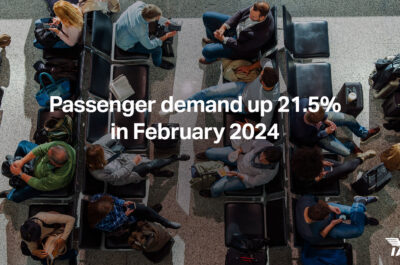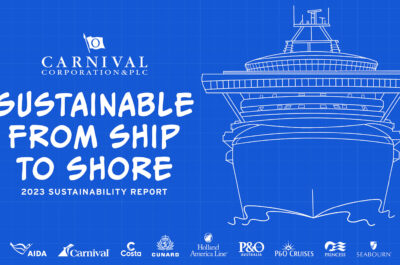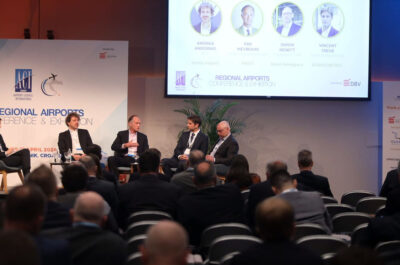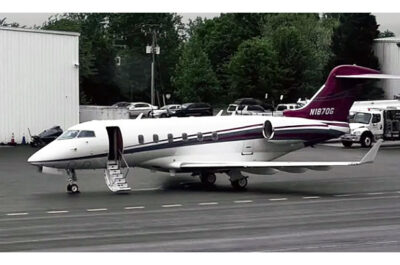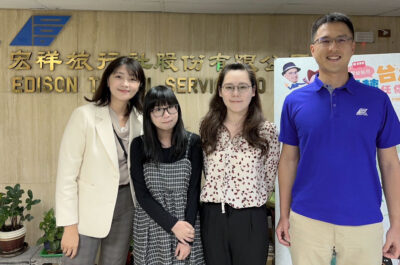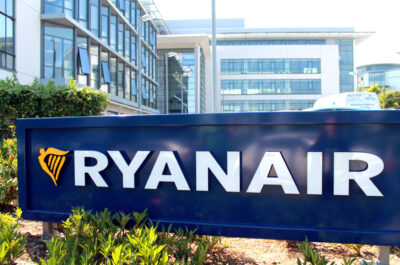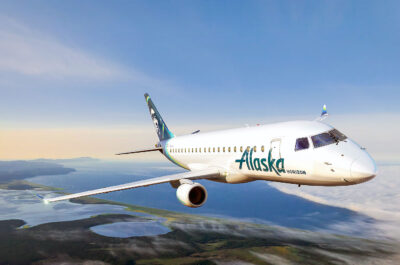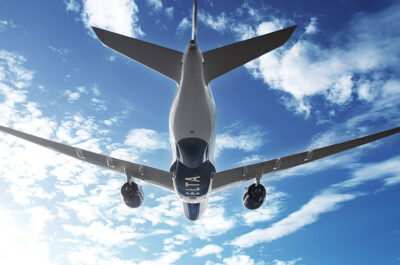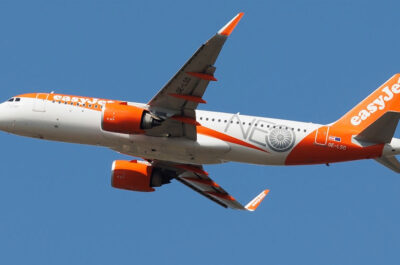Remarks of Tony Tyler at the IATA Ops Conference in Vienna.
Ursula Zechner, Director General, Federal Ministry for Transport Innovation and Technology Vienna, Professor Mario Rehulka, President Austrian Aviation Association and former CEO of Austrian Airlines, Jaan Albrecht, CEO of Austrian Airlines, Heinz Sommerbauer, General Secretary, Austro Control and Johann Zemsky, Member of the Board of Austro Control, attendees and sponsors, good afternoon.
It is a pleasure to be with you today at my first OPS Conference. I would like to thank Austrian Airlines for hosting this event in such a wonderful venue. I know we have a very tight schedule so I will move right into my remarks.
Safety, security, operations and infrastructure are the cornerstones of modern air transport. In the 99 years since Tony Jannus piloted the first airline flight we have connected the world as never before, and transformed long-distance travel from a high-risk proposition into a routine part of daily life. Austria has a special connection to the early history of aviation through the development in 1910 of the Etrich Taube monoplane. Over the next two days, your work here will help to shape commercial aviation as we prepare to enter the second century.
This year we expect to transport more than 3 billion passengers and nearly 48 million tonnes of cargo worth $6.4 trillion—35% of world trade by value. This activity globally supports some 57 million jobs and $2.2 trillion in economic activity. And while we work in a fiercely competitive industry, we also share a responsibility to make it work.
Aviation was built on collaboration and teamwork. Over 80,000 times a day we witness a remarkable choreography of cooperation among employees belonging not just to one organization, but to two or three or more, working in harmony to get an airplane and its passengers safely into the air – and back on the ground. And the more that we work together in non-competitive, non-commercial areas, the more successful the industry will be.
Outlook
A review of our financial performance assures me that we have plenty of untapped potential, because we are just keeping our heads above water! This year, we expect to achieve a 1.6% net profit margin. That’s $10.6 billion in net profits on revenues of $671 billion. That does not even cover our cost of capital. Since 2003 airlines generated about $5 trillion in revenues. But we struggled to cover costs and the industry barely broke even, with an average net profit margin of 0.1%. There’s no denying it -we work in a very challenging business. We simply cannot afford to accept inefficiency and waste in any aspect of our business, not if it is to be made sustainable. And everyone involved in the airline industry -and the value chain for that matter- must keep that in mind as we look to find ways to improve:
– Safety
– Regulation
– Efficiency
– Security
Safety
Despite our challenges, we have not taken our eyes off of our top priority, which is safety. Last year was the safest ever, with an average of just one Western-built jet hull loss for every five million flights. IATA’s 240 member airlines recorded no Western-built jet hull losses in 2012. In fact, there were no Western-built jet hull losses among the 380+ airlines on the IATA Operational Safety Audit (IOSA) registry.
Furthermore, I am very pleased to report that we continued to improve our performance in the first quarter of 2013, with a Western-built jet hull loss rate of 0.13 per million sectors, improved from 0.14 in the year-ago period. IATA members experienced no Western-built jet hull loss accidents in the first quarter of 2012 or 2013, and the same holds true for airlines on the IOSA registry.
What makes our industry so safe is the commitment of everyone at every level to make each and every flight as safe as it can be. Guiding all of these efforts are global standards like IOSA and the IATA Safety Audit for Ground Operations (ISAGO), built through cooperation and common purpose in global institutions such as the International Civil Aviation Organization (ICAO), IATA and others. Interestingly, the IOSA project was launched in Vienna 12 years ago this month, and the registry is now celebrating its 10th anniversary, with 380 carriers on the registry representing over 64% of all industry flights.
While we can celebrate being a safe industry, we must also constantly live with the recognition that every accident is one too many. And the challenge is always to do better. There are, for example, gaps in safety performance between regions which much be addressed.
It is no secret that the biggest gap is in Africa. Tomorrow I will be in Addis Ababa and safety will be at the top of my agenda. Compared to a world rate of 0.20 Western-built jet hull loss accidents per million sectors in 2012, Africa’s rate was 3.71. To address this situation, IATA joined with ICAO and other stakeholder groups in support of the Africa Strategic Improvement Action Plan. The Plan was endorsed as part of the Abuja Declaration and ratified at the Assembly of the African Union in January 2013. The goal is to achieve world-class safety levels in Africa by 2015.
It won’t be easy. But we know it is possible. African airlines on the IOSA registry, for example, had no accidents with Western-built jet aircraft in 2012. And even if we look at all aircraft types, the performance of IOSA-registered African airlines was in line with the global average. That is why one of the key elements of the plan centers on IOSA—making it mandatory for airlines registered in the African Union by 2015.
As with safety in general, we will only be successful in Africa with a team effort. The Abuja Declaration demonstrates the political will to improve. But it will take working together to deliver the results. Although it is far too early to say that we are winning, through the 2013 first quarter, Africa sustained no Western-built jet hull loss accidents.
Our commitment to raising the bar on safety is not limited to Africa. Constant improvement—across the board—is imperative.
As discussed, IOSA is an effective global standard that is helping to improve safety. Now we are developing Enhanced IOSA (E-IOSA). This augments compliance to the audit’s 900+ standards with a further dimension of internal quality assurance programs with a self-auditing methodology. The US Federal Aviation Administration and European Aviation Safety Agency are both supportive of the Enhanced IOSA.
We have set an ambitious target to do 10 E-IOSAs this year, and to achieve 100% E-IOSA by the end of 2015. This will not be easy, and we will be relying on the industry’s long tradition of embracing safety improvements to help achieve our goal.
Recognizing that data will guide our safety efforts, next year we are going to launch the Global Aviation Data Management (GADM) portal. Already IATA’s Global Safety Information Center’s (GSIC) six databases benefit from 830 information feeds contributed by some 420 organizations. The GADM portal will make GSIC an even more powerful tool by incorporating other information sources for operations, infrastructure, security and auditing.
Global standards and data sharing also are critical to responding to the safety challenges presented by the carriage of lithium batteries, which have been potentially implicated in the loss of three transport aircraft. From a risk perspective, the chief issue is poorly manufactured batteries and those not shipped in accordance with the existing regulations. There is a need to raise awareness of the dangers of shipping these batteries with freight forwarders and postal authorities. I would like to commend ICAO for their very quick modifications to existing regulations last year to improve these necessary standards. And we had a very productive workshop this morning on the issue.
Regulation
It’s not news in this forum that aviation is probably the most regulated commercial activity on the planet. It is also among the most global. Put these two facts together and the need for harmonization and standardization on the part of our regulatory partners becomes crucial.
Regulation is not going to go away, nor should it. Effective regulation is vital to helping solve Africa’s safety problems and carriage of lithium batteries, for example. But increasingly we are seeing a tendency of states to introduce new requirements that are at odds with guidance and standards through ICAO and that add little or no value.
This is particularly a problem in matters involving an airline’s Aircraft Operator Certificate (AOC) and Ops Specs, in which regulators in one state issue new requirements affecting operators from another. There is a better way: rather than continuing down the path towards increasing fragmentation of widely-accepted standards, we require a global solution such as ICAO’s AOC database. I know representatives from some of aviation’s leading regulators are attending this conference and I have a simple message for you: It is time to “Stop the Madness” regarding Ops Specs and return to the ICAO standards and move forward on the AOC database.
Audits are another issue. One of the intents of programs such as IOSA was to cut down on the number of redundant and overlapping audits while creating a single globally accepted operational safety standard. However, new ones are being introduced, like the EU’s Air Cargo or Mail Carrier operating into the Union from a Third Country Airport (ACC3) Cargo Security Audit requirement. IATA strongly opposed the ACC3 requirement but now that it is being implemented our role has to evolve to one of support for industry. We have created the IATA Center for Excellence for Independent Validators (CEIV) to increase the quality and standardization of validators as well as to educate airlines on how to comply.
Please do not misunderstand this initiative; we do not encourage the spread of regulations such as ACC3 to other regulators. Redundant and overlapping audits do little to improve safety or security, while adding costs that ultimately must be passed on to our customers.
I’d like to step back for a moment to address briefly another regulatory issue that has been much in the news — the certification of new aircraft. Whatever difficulties and technical challenges have arisen with specific programs it should not be used as a lever to cast aside the time-proven processes and procedures that have contributed so much to making aviation as safe as it is.
Efficiency
Our efficiency campaigns will require our efforts and the cooperation of our partners and governments. One very exciting opportunity, which I know will be discussed in detail tomorrow, is Paperless Aircraft Operations—on the flight-deck, in the ops center, in the maintenance hangar. In addition to the environmental benefits from the weight savings and reduction in paper, we expect to uncover new efficiencies, as has occurred with the introduction of Electronic Flight Bags. This initiative also can contribute significantly towards regulator efficiency, reducing the cost burden on regulators.
RFID tags for aircraft parts and components and the ICAO AOC Registry are important elements of the drive toward Paperless Aircraft Operations.
The vision is that Paperless Aircraft Operations can have a similar impact in terms of cost savings and efficiency that e-tickets have had in the commercial world. For example, one aircraft financier has estimated that moving to a paperless environment for transfer of aircraft at the end of a lease could save the industry $400 million per year. And just as the e-ticket revolution made possible a succession of new efficiencies—Fast Travel, Electronic Miscellaneous Documents and the New Distribution Capability, I expect that we will find equivalent opportunities in the operational arena.
What is needed now is a roadmap that will lead us there, with aggressive but realistic targets to drive us.
As we search for further efficiencies internally, we also need to ensure that our infrastructure partners are doing the same—particularly air navigation service providers (ANSPs). Additionally, their support will be crucial to enabling us to meet our aggressive environmental commitments including a 1.5% improvement in fuel efficiency to 2020, carbon neutral growth from 2020, and a 50% reduction in net carbon emissions in 2050 compared to 2005.
At the tactical level, most ANSPs are very good at using the tools they have to enable us to fly the most efficient routes available. Our work to implement Performance-Based Navigation (PBN) provides an excellent example of cooperation and there are important safety and efficiency gains to be realized from things such as Required Navigation Performance, Continuous Climb and Continuous Descent Operations and optimizing routes. But we need to think bigger and faster and to translate individual efficiency improvements into systemic gains.
Europe needs the Single European Sky (SES), but progress is glacial. The European Single Sky Committee’s recent decision to endorse weakened Performance and Charging Scheme regulations for ANSPs over the period 2015-2019 is a huge setback in the drive to deliver the efficiency improvements aviation needs.
IATA in cooperation with the Association of European Airlines and the European Regions Airline Association recently published ‘A Blueprint for the Single European Sky’. This report outlines a roadmap towards achieving not only the SES cost target, but also the safety, capacity and environmental targets as well. The analysis shows that there is no insurmountable technical obstacle preventing the achievement of the SES goals, but there are three key reforms that we see as essential to achieving the SES:
A binding performance system through the establishment of an independent European regulator for air navigation charges
The rationalization of air traffic management structures through opening up services to competition and a reduction in the number of air traffic control centers across Europe to not more than 40
Improving the efficiency of the network through the modernization of the air traffic management system
Some tough choices need to be made. Our report may not be the only way forward, but whatever is agreed, we need an overall plan to realize the SES. And we urgently need to make progress by agreeing to the essential reforms and getting on with delivering them. The failure to implement the SES in Europe costs airlines, air travelers and the overall economy 5 billion euros annually and wastes some 8.1 million tonnes of CO2 per year—and it hurts our ability to grow. We have a dedicated panel on Wednesday to discuss the way forward.
Looking beyond Europe, I know that some of you–as well as IATA–are heavily involved in the planning and implementation of the Federal Aviation Administration’s (FAA) NextGen project. We are excited about the potential, but before committing to spending billions of dollars on new cockpit technology, we need to be sure that the benefits will exceed the equipage and training costs.
I’d like to mention an exciting project done in cooperation with FAA that will become even more valuable as NextGen is implemented. We have established an IATA Liaison Desk at the FAA Command Center in Northern Virginia and last Friday we went live with the IATA Tactical Operations Portal (ITOP), the web platform for collaborative, tactical air traffic management, supporting the Liaison Desk. These two programs will allow us to be the eyes and ears for your airlines, keeping them abreast of developments that will affect them—and you– and helping to coordinate work-outs that minimize impact on operations.
This new position is somewhat analogous to our desk at Eurocontrol’s Central Flow Management Unit, which has proven to be very successful over the past decade. We are also working with the Chinese authorities to establish an equivalent position in their air traffic control unit.
Security
We are slowly moving toward the same deep stakeholder cooperation and alignment on security that we have achieved on safety. But we are not there yet and that concerns me greatly. Passenger numbers have nearly doubled since 2001. And they will likely double again by 2030. The vast majority—probably much more than 99.99999%–of these passengers pose no threat. But we treat them all alike—as we do some of our most trusted employees. This one-size-fits-all prescriptive model for security is not sustainable. If we don’t evolve it, the system will grind to a halt under its own weight; in fact it is already slowing. Before 9.11 the average checkpoint processed 350 passengers per hour. Today it is below 150.
If we are struggling just to manage the process, at some point we will lose the ability to stay ahead of how the threat is evolving. That’s why we need a risk-based model. This concept underlies the Checkpoint of the Future project, an industry initiative supported by IATA. Risk–based security is about making better use of the information that is available to assess the likelihood that people, objects or situations can pose threats.
Last autumn we released the Checkpoint of the Future Roadmap and Concept Definition. We are now focused on implementation. Important component trials with airport partners have already taken place at Geneva, London Heathrow and Amsterdam Schiphol. For 2013, we are planning ten trials that will support rollout of the first end-to-end Checkpoint in 2014. Our vision is that by 2020 travelers will move through the checkpoint without standing in line, removing outerwear or unpacking laptops and liquids.
When it comes to securing the air cargo supply chain, we are being guided by many of the same principles as our work on passenger security. This means using global standards, risk-based analysis and working together, rather than a top-down, rules-driven, state-by-state approach. Mandates that are not aligned with the way the air cargo business actually operates will be impossible to implement effectively without affecting speed of delivery, the very rationale for the business.
We remain focused on a supply chain approach to screening that takes full advantage of the capabilities of all stakeholders. One of the components of our overall strategy is Secure Freight. This industry initiative is aimed at providing guidance on cargo security, based on understanding the identity of the shipper and other members of the supply chain and ensuring that cargo is secured upstream and maintained in sterile conditions along its way.
At the leading-edge of this is the Air Cargo Advance Screening (ACAS) program which identifies a set of cargo data to be transmitted by the airline. The US Customs and Border Protection (CBP) and Transportation Security Administration launched this program in close cooperation with the airlines, freight forwarders, Airlines for America, IATA and other industry stakeholders.
Conclusion
Before I leave you, I would like to pay my respects to one of my colleagues, and someone many of you know very well. Guenther Matschnigg has announced he will retire from IATA at the end of the year. I know all of you will join me in thanking Guenther for his strong leadership in the areas of safety, operations, security and infrastructure during his 14 years with the organization. The IOSA program was his idea and developed under his careful watch. His years at IATA saw tremendous progress in safety, the development of Chinese airspace and the global conversion to reduced vertical separation minima. I’d like him to have seen through the Single European Sky, but at the pace of developments perhaps the best that we can hope for is to have played a role in a project that is eventually realized! He has also successfully helped to guide the industry through its most turbulent and crisis-laden period. On behalf of all of you, thanks Guenther for a great 14 years of contributions to our vital industry.
In less than nine months, we will celebrate the 100th anniversary of the first commercial flight. IATA is a bit younger than that, but we are committed to helping the air transport industry achieve even greater things in the next 100 years. You are laying the groundwork for much of that success through the work you do in meetings such as this.
Thank you.
Theodore is the Co-Founder and Managing Editor of TravelDailyNews Media Network; his responsibilities include business development and planning for TravelDailyNews long-term opportunities.















